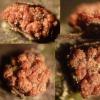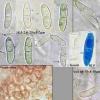
10-01-2026 01:18
 Danny Newman
Danny Newman
cf. Neovaginatispora fuckelii on indet. shrub Pre

07-01-2026 10:24
 Danny Newman
Danny Newman
Pezicula sp. on indet. hardwood Appalachian Highl

09-01-2026 17:41
Arnold BüschlenHallo, F. dilatata wird von vielen Bryoparasiten

09-01-2026 10:08
 Blasco Rafael
Blasco Rafael
Hola, en el mismo habitat que la anteriorRetamaDia

08-01-2026 21:22
 Blasco Rafael
Blasco Rafael
Hola, He recogido esta muestra de Orbilia sobre Re

07-01-2026 22:22
 Danny Newman
Danny Newman
Tatraea sp. on indet. hardwood The Swag, Great Sm

07-01-2026 17:29
 Marc Detollenaere
Marc Detollenaere
Dear Forum,On a barkless Populus I found some smal

10-11-2021 17:33
 Riet van Oosten
Riet van Oosten
Add-on topic http://www.ascofrance.com/forum/7059

07-01-2026 10:05
 Danny Newman
Danny Newman
cf. Chaetospermum on XylariaCosby Campground, Grea
Nectria on Frangula alnus
Björn Wergen,
27-07-2011 13:59
 Hi,
Hi,yesterday I have found a new Nectria on dead Frangula-twigs. It has very large spores with a length sometimes over 25 µm. The fruitbodies are clustered on a Stroma which seems not to be well developed, perithecia are about 0,2-0,4 mm and pale red to orange-red oder orange-brown.
The interesting fact is, that the asci have almost only 4 or 6 spores. I didn't see any asci with 8 spores. Spore ornamentation seems to be smooth, without striae. I will add some photos here, perhaps someone can help me with this or at least with a good nectria-key (I have only one key with striae-spored nectria...)
best regards,
kazuya
Björn Wergen,
27-07-2011 15:01

Re : Nectria on Frangula alnus
note: I think the small spores are "secondary spores", aren't they? I had called them "conidia spores"...
Christian Lechat,
27-07-2011 20:37

Re : Nectria on Frangula alnus
Dear Kazuya,
could you please make a vertical section through ascomatal wall and stroma?
Conidia looks like Tubercularia.
Christian
could you please make a vertical section through ascomatal wall and stroma?
Conidia looks like Tubercularia.
Christian


